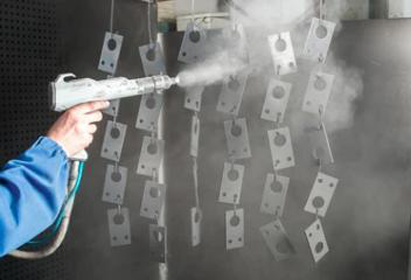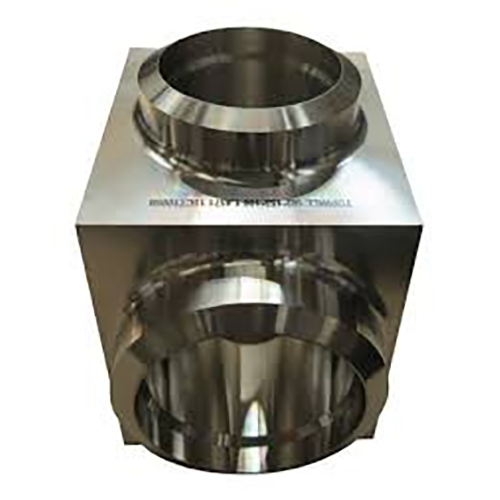
Securing exact surface quality on a machined component is critical.
- Technical drawings lay out precise surface criteria for components
- Drawings commonly cite Ra, meaning root mean square average, to measure texture
- Grasping callout meaning is essential to make parts conform to design intent
- Prescribed surface characteristics govern lubrication, abrasion, and longevity
- Precise decoding of callouts secures the specified finishing outcome
Precision Principles of CNC Machining

CNC machining is a transformative approach within manufacturing using CNC instructions the equipment fabricates detailed forms with consistency.
- Numerical control tools generate quality components from varied media
- Wide-ranging CNC applications encompass medical, electronics, and transport industries
- Automated machining provides consistent reproducibility for uniform components
From early-stage prototyping through mass manufacturing CNC machining underpins modern fabrication
Deciphering CNC Machine Specifications
Parsing spec sheets may feel challenging at initial inspection
Even so practical familiarity and a systematic plan enable decoding machine specs
Launch by determining central specs: spindle rpm, feed velocity, accuracy, envelope, controller
Each of these specifications contributes to the machine's overall performance.
For example a higher spindle speed is suitable for softer materials while a faster feed rate is essential for increased production.
Grasping those connections helps choose machinery aligned with your needs
Don’t forget to review maker-supplied manuals carefully.
Vendor literature commonly contains useful guidance and explains terms
A Guide to CNC Machines: What You Need to Know
Programmed machining equipment comprises computer-managed tools for exact automated fabrication of diverse materials They accept digital G-code to steer tools and control machining actions.
- Some types of CNC machines include milling machines lathes routers and plasma cutters
- CNC machining processes are highly versatile and can be used to work with a wide range of materials including metals plastics wood and composites
- Furthermore CNC machines allow for rapid prototyping and low-volume production runs making them valuable assets for small businesses and research centers
CNC Fundamentals and Principles
They demonstrate convergence of tight hardware tolerances and refined software control Programmable machines execute software-driven fabrication of straightforward components and complex constructions The fundamental principle behind CNC machines is the translation of digital designs into physical forms.
- Computer Numerical Control machining
- Digital-to-physical process
It requires coordinated toolpath steps instructed by G-code Operators play a crucial role in selecting the appropriate cutting parameters monitoring the operation and ensuring the quality of the final product.
The Role of Surface Finish in CNC Machining
Achieving the desired surface finish in CNC machining is crucial It modifies operational efficiency and cosmetic finish The material, machining regimen, and subsequent finishing treatments contribute to surface quality.
Smoother surfaces elevate durability while coarser textures may impair utility Code-driven machining enables selective tooling and techniques to attain required textures.
- Consider using alternative cutting shapes |PCD tools|cutting speeds to achieve a desired surface finish
- Additionally finishing processes including polishing and grinding refine texture
Knowing parameter-to-finish links is vital to secure the best results.
CNC Fundamentals: Operations and Uses
High-accuracy manufacturing via CNC employs programmed equipment to form components from varied materials They apply digital directives to fabricate detailed geometries consistently Basic knowledge of machine operation, G-code, and tooling selection plays a vital role in success
Industry applications include aircraft, automotive, medical, electronics, and beyond From aircraft parts to precision plastic molds, CNC creates complex high-quality items
Notation for Surface Finish on Machined Parts
Clear finish definition is critical for CNC machined components It verifies compliance with intended functional and aesthetic goals Finish specifications are often expressed via the Ra roughness standard Reported in µm or inches, the metric indicates average irregularity magnitude.
When specifying a surface finish callout consider both the required level of smoothness and the intended application of the part

Generally fine finishes benefit components requiring precision alignment and tolerance
Coarse finishes can benefit components where traction or friction are functional
Use explicit finish instructions on design documents to convey the surface requirement Document the Ra value and enumerate any extra finishing or treatment instructions.
Note that precise surface specifications contribute directly to production success
Kinds of CNC Machines and Their Strengths
The CNC ecosystem includes a broad selection of machines for multiple task categories They use CAD-generated toolpaths to control tooling for exact component production.
- Milling centers craft intricate contours cavities and surfaces by subtractive cutting
- Profiling routers cut complex outlines usually in softer materials
- Beam and jet cutting methods enable accurate slicing with differing thermal impacts
Pick machines based on material compatibility, feature detail, and dimensional demands Every machine class brings specific strengths that serve sectors like aerospace and automotive.
Reaching Optimal Surface Quality Using CNC
Obtaining fine surface quality is important and CNC technology delivers consistent control to attain it Through tailored feed rates spindle selection and tool design engineers control surface formation and limit imperfections Also advanced insert materials and suitable coolant practices support improved finishes Deliberate machining strategies and exact setups enable production of components with excellent texture.
Programming Strategies for Surface Finish
Skillful CNC programming directly impacts the final surface quality Selected feeds speeds and tool geometry directly shape the resulting surface profile Careful selection of these parameters in conjunction with proper lubrication and coolant management can yield a smooth and flawless surface finish.
- Besides that systematic tool upkeep and monitoring ensure sustained surface quality Also ongoing tool care and inspection support sustained finish reliability Continuous tool maintenance and oversight preserve high finish cnc process consistency
- For better finishes evaluate substrate, roughness goal, and functional context
- Toolpath simulation enables testing parameter impacts to cut down surface errors
- Plus regular inspection and maintenance of tools copyright finishing standards
